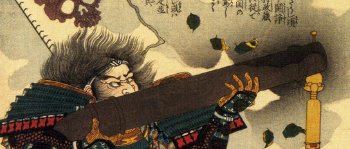AKBAN Wiki: The Definitive Ninjutsu Encyclopedia
The world's most comprehensive Ninjutsu techniques resource — Over 7,000 documented techniques from authentic Japanese martial traditions
What Makes AKBAN Wiki Unique
AKBAN Wiki stands as an unparalleled martial arts resource, meticulously preserving the complete Takamatsu-den martial systems passed down through generations of Japanese warriors. Unlike simplified modern interpretations, we document techniques with historical accuracy, practical applications, and their philosophical context.
Our encyclopedia serves both practitioners and scholars with detailed breakdowns of techniques, Japanese terminology, historical context, and tactical applications—all supported by high-quality visual demonstrations that reveal nuances lost in text descriptions alone.
Featured technique demonstration
Combat Stances (Kamae)
Kamae are more than static positions—they embody tactical readiness, psychological preparation, and strategic advantage, optimizing the body for specific responses while protecting vital areas.
Joint Locks (Kansetsu-waza)
Ninjutsu joint manipulations represent sophisticated control mechanisms developed for battlefield and peacekeeping, applying appropriate levels of violence through mechanical advantage and anatomical knowledge.
Throwing Techniques (Nage-waza)
Evolved to incapacitate armored opponents on battlefields, these techniques use subtle balance disruption and leverage to overcome physically superior adversaries, emphasizing practical application over aesthetic form.
Training & Progression System
Structured Training Syllabus
AKBAN's yearly training syllabus represents a methodical approach to martial education, integrating fundamental movements, tactical principles, and progressive skill development across multiple combat domains.
Examination System
Our belt-ranking system differs from commercialized schools. It takes 5–12 years to reach black belt, with each rank representing verifiable mastery of specific principles and techniques rather than time spent training.
Core Technical Categories
Kicks (Geri)
Unlike sport-oriented techniques, these kicks target vulnerable areas with precision and economy of motion, emphasizing low-risk execution, stability, and seamless integration with other fighting methods.
Strikes
Sophisticated impact techniques refined through centuries of practical application, with emphasis on pressure points. These methods include specialized striking surfaces optimized for specific targets and tactical situations.
Traditional Weapons
Each weapon system includes technical manipulation, maintenance, tactical application, and strategic context. From battlefield swords to concealed chain weapons, these systems represent sophisticated approaches to armed combat.
Movement (Sabaki)
The connective tissue between all technical aspects, including evasion, strategic repositioning, closing techniques, falling methods, and recovery movements that maintain tactical advantage throughout combat encounters.
Takamatsu-den Ancient Systems
These nine distinct schools (ryū) represent one of history's most comprehensive collections of traditional Japanese martial arts, transmitted through an unbroken lineage from feudal Japan.
Shindenfudō-ryū
Founded 1113, emphasizes natural body movement, powerful striking methods, and resilient body conditioning. Current Sōke: Nagato Toshiro (27th generation).
Kukishin-ryū
Founded 1336, renowned for its extensive weapons curriculum including spear, staff, sword, and unique weapons. Current Sōke: Iwata Yoshio (29th generation).
Takagiyōshin-ryū
Founded 1625, specializes in flexible body techniques, including sophisticated methods for unarmed defense against sword attacks. Current Sōke: Sakasai Norio (18th generation).
Gyokko-ryū
Founded 1156, one of the oldest systems, highly influential in shaping the fundamental unarmed techniques, specializing in precise finger and toe striking methods. Current Sōke: Ishizuka Tetsuji (29th generation).
Kotō-ryū
Founded 1532, focuses on bone-breaking techniques and distinctive footwork patterns, characterized by direct, powerful approaches to combat. Current Sōke: Noguchi Yukio (19th generation).
Additional Schools
Gikan-ryū, Togakure-ryū, Kumogakure-ryū, and Gyokushin-ryū each contribute unique perspectives and specialized techniques to the comprehensive AKBAN curriculum.
Documentation in progress











